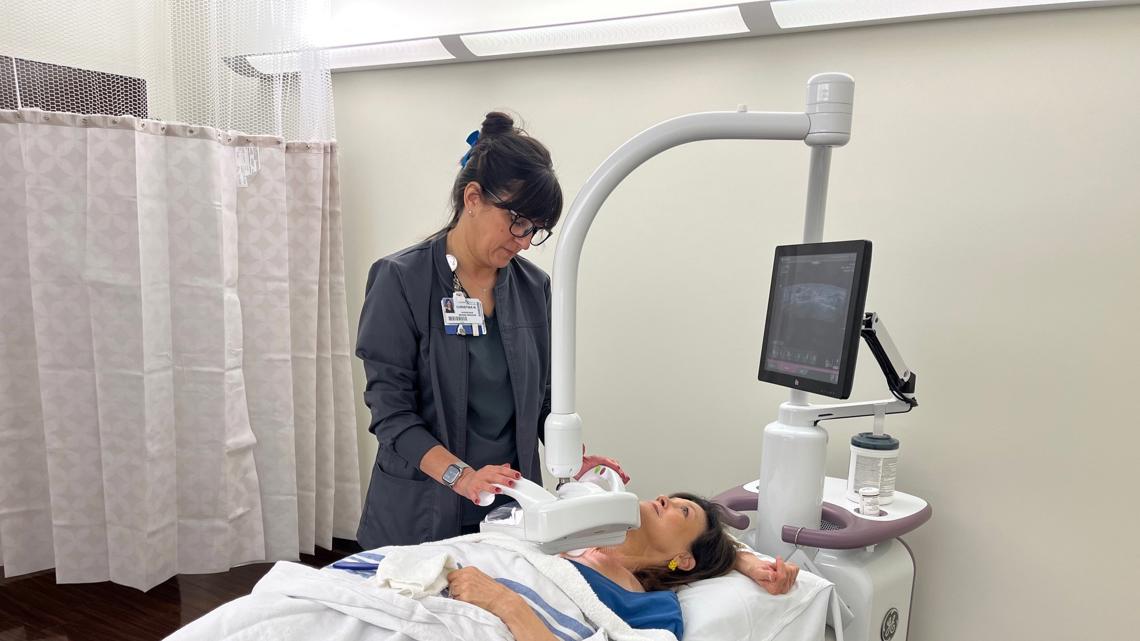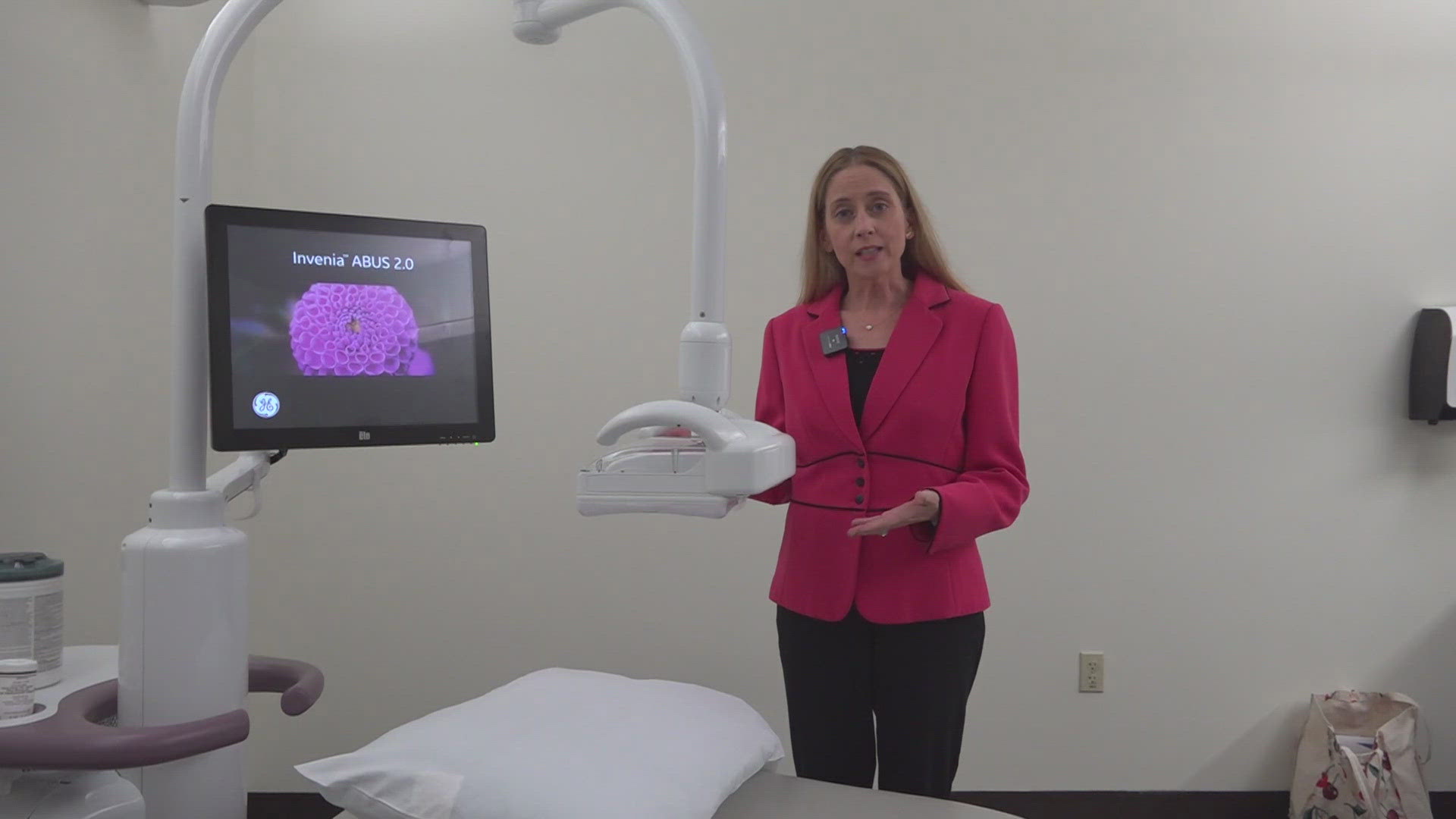JACKSONVILLE, Fla. — As of September 10, 2024, a new federal mandate kicked in to require mammogram reports give a breast density rating.
In a breast density rating, you'll see on your report an A, B, C or D.
I got a C on my mammogram. What does that mean?
A and B mean less dense breasts.
C and D mean higher density breasts.
Dr. Dianne Johnson, diagnostic radiologist at Baptist/MD Anderson, says women should know their breast density.
"About 50% of women have dense breast tissue," she says. "It turns out if you have dense breasts, it increases your risk of breast cancer."
Why?
Johnson says one key reason is that dense breast tissue appears white on a mammogram. But so does a cancer. "It's hard to pick out," she says.
And my C on my mammogram?
"It means 50 to 75% of your breast is dense breast tissue," Johnson says.
For women with higher density breasts, Baptist/MD Anderson now has what's called the ABUS, a type of ultrasound that uses sound waves to create a 3D image of breast tissue. ABUS stands for Automated Breast Ultrasound (ABUS).
I tried it and had no pain at all. In fact, the machine never even touches you.


Johnson says one advantage is that ABUS gives doctors a map of your breast that can be used for year-to-year comparisons. ABUS does not replace a mammogram, however.
Ask your healthcare provider if you should get an ABUS image or if another imagery is recommended.
You may also see your risk over a lifetime of getting breast cancer on your mammogram report. If it's more than 20%, you may qualify for a breast MRI and your insurance may cover it.

